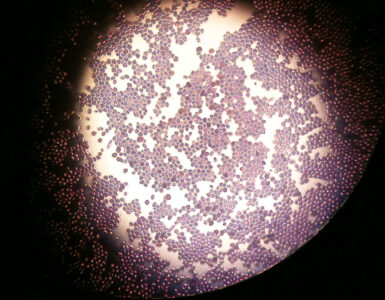By Rhodilee jean A Dolor
The microbe Conan the Bacterium, more formally known as Deinococcus radiodurans, is one of the toughest organisms on Earth.
While humans can suffer serious health issues following exposure to 0.3 units of radiation called grays and may die after prolonged exposure to about 5 grays, studies have shown that Conan the Bacterium can survive 25,000 grays when suspended in liquid.
Toughest Organisms on Earth
Conan the Bacterium is an example of an extremophile. Extremophile are a diverse group of organisms that can thrive in extreme environments that may otherwise kill most lifeforms.
Extremophile can be thermophiles, or those found in high temperature environments and can tolerate temperatures close to the boiling point of water; psychrophiles—those that thrive in permanently cold habitats where temperatures go below the freezing point of water; piezophiles, which can tolerate pressure as high as 1000 atm; halophiles, which can live in environments with high salt concentrations; acidophiles that can survive highly acidic conditions or alkaliphiles, which can thrive in extremely alkaline environments.
Conan the Bacterium is a polyextremophile, an organism which can tolerate two or more extreme environmental factors. The bacterium, whose name means “strange berry that withstands radiation,” is distinguished as the most radiation-resistant organism. It can also withstand extreme cold, acid, dehydration and vacuum.
Extremophile May Hold Clue to Finding Alien Life on Mars
Space scientists are interested in extremophiles amid search for extraterrestrial life.
In a study published in the journal Astrobiology in October 2022, researchers found that if Conan the Bacterium is buried frozen and dried 4 inches below the surface of Mars, it can survive for as long as 1.5 million years. Its lifetime will also significantly increase when it is placed 33 feet below the planet, where it could persist for up to 280 million years.
Michael Daly, a professor of Pathology at the Uniformed Services University of the Health Sciences (USUHS) and member of the Committee on Planetary Protection (CoPP) of the National Academies of Sciences, who led the study, said that their findings have important implications in the search for life on Mars.
The researchers suggest that if organisms like Conan the Bacterium once thrived on the Red Planet when water was still flowing on it, it is possible that some of them may have survived underground.
“Although D. radiodurans buried in the Martian subsurface could not survive dormant for the estimated 2 to 2.5 billion years since flowing water disappeared on Mars, such Martian environments are regularly altered and melted by meteorite impacts,” Daly said. “We suggest that periodic melting could allow intermittent repopulation and dispersal.
The findings suggest that Mars missions looking for signs of life on the planet should consider exploring large craters younger than 280 million years.
“If Martian life ever existed, even if viable lifeforms are not now present on Mars, their macromolecules and viruses would survive much, much longer. That strengthens the probability that, if life ever evolved on Mars, this will be revealed in future missions,” Daly said.
The researchers said that their findings also imply that scientists need to treat with caution the Martian soil samples that are being brought to Earth since these may possibly be contaminated with extraterrestrial bacteria.
Powerful Uses of Extremophiles
Researchers are also drawn to studying extremophiles because of the idea that these organisms have potential uses in several industries and may even offer solution to some of the world’s key problems.
In a study published in FEMS Microbiology Letters in August 2021, Juliane Moura, from the Federal University of São Carlos in Brazil, and colleagues identified a group of bacteria and yeast that live in photovoltaic panels that convert sunlight into electricity.
The microorganisms thrive despite constant exposure to sunlight and scarcity of water. Given these characteristics, the extremophiles may be used to develop products with extended exposure to sunlight, which include sunscreens, pigments for processed foods, chemicals, textiles, pharmaceuticals and cosmetics.
“Concerning the biotechnological potential, the presence of metabolites related to stress resistance in the predicted data indicates that the microbial community investigated is possibly a supply of desired products,” the researchers wrote.
Because of their ability to survive in the harshest of the world’s environments, extremophiles also play a role in bioremediation, a process that uses living organisms to remove contaminants, pollutants and toxins from water, soil and other environments.
In a research published in Frontiers in Microbiology in May 2022, Júnia Schultz, from King Abdullah University of Science and Technology, and colleagues found that heat-loving bacteria living in Deception Island, an active volcano in Antarctica, can be used to safely and efficiently clean up oil contamination.
“Certain bacteria eat petroleum as a source of carbon, nutrients and energy,” said Schultz. “To do this, they first secrete surfactants—substances that break the oil’s surface tension—before absorbing the emulsified petroleum into their cells, where it is degraded via enzymatic activity.”
Studying extremophiles also finds application in the field of medicine
In a study published in Nucleic Acids Research in July 2022, researchers reported that an extremophile that lives in the Gobi Desert in northern China and southern Mongolia has a genome that produces powerful antibiotics.
Paul Dyson, from the Institute of Life Science at the Swansea University Medical School, and colleagues said that the antibiotic can kill four of the top six antibiotic-resistant pathogens, including the highly resistant Methicillin-resistant Staphylococcus aureus (MRSA) bug.
The discovery can pave the way for new and better antibiotic treatments. The extremophile involved in the study may even help combat the growing problem of antibiotic resistance.
According to the first comprehensive analysis of the global impact of antimicrobial resistance (AMR) published in The Lancet in January 2022, 1.27 million people died in 2019 as a result of antibiotic-resistant bacterial infections. The death toll is higher than that of HIV/AIDS and malaria. Extremophile research may uncover solutions to some of humanity’s most prolific afflictions.









